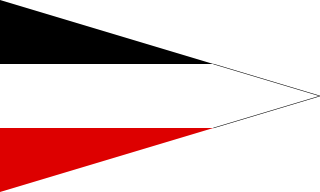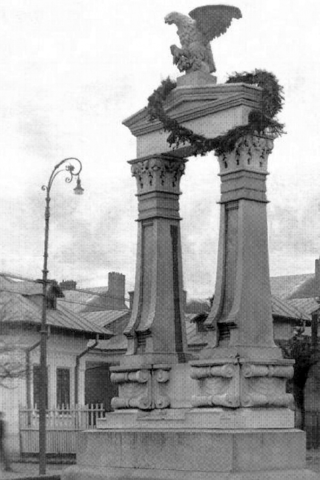Related Research Articles

The 3rd Army was a field army of the Romanian Land Forces active from the 19th century to the 1990s. It fought as part of the German Army Group B during World War II, in Ukraine, the Crimea, and the Caucasus. General Petre Dumitrescu commanded the 3rd Army for much of that time.

The second Jassy–Kishinev offensive, commonly referred to as the Jassy–Kishinev offensive named after the two major cities, Iași ("Jassy") and Chișinău ("Kishinev"), in the staging area, was a Soviet offensive against Axis forces, which took place in Eastern Romania from 20 to 29 August 1944 during World War II. The 2nd and 3rd Ukrainian Fronts of the Red Army engaged Army Group South Ukraine, which consisted of combined German and Romanian formations, in an operation to reoccupy Bessarabia and destroy the Axis forces in the region, opening the way into Romania and the Balkans.
The Imperial Russian Army in June 1812 consisted of three main armies and other military formations. The Commander in Chief of the Army was Emperor Alexander I.

The Guards Cavalry Division (Garde-Kavallerie-Division) was a unit of the Prussian Army that was stationed in Berlin. The division was a part of the Guards Corps (Gardekorps).
The Russian Sixth Army was a World War I Russian field army that fought on the Eastern theatre of war.

The Romanian Front was an army group level command of the Imperial Russian Army and the Romanian Army during the First World War.
The Bulgarian Third Army was a Bulgarian field army during the Balkan Wars, World War I, and World War II.

The Second Battle of Cobadin took place from 19 to 25 October 1916 between the Central Powers, chiefly the Bulgarian Third Army, and the Entente, represented by the Russo–Romanian Dobruja Army. The battle ended in a decisive victory for the Central Powers; it resulted in the occupation of the strategic port of Constanța and the capture of the railway between that city and Cernavodă.
The VI Corps of the Ottoman Empire was one of the corps of the Ottoman Army. It was formed in the early 20th century during Ottoman military reforms. It is most notable for its participation in the offensive phase of the 1916 Romanian Campaign of World War I, where it was involved in heavy action all throughout the five months, inflicting heavy casualties on the Russo-Romanians and breaking through the Allied lines in several key areas. Additionally the VI Corps took 8,512 prisoners in Romania, including 6,512 Russians and 2,000 Romanians.

The XV Corps of the Ottoman Empire was one of the corps of the Ottoman Army. It was formed during World War I.

The 2nd Cavalry Division was a unit of the German Army in World War I. The division was formed on the mobilization of the German Army in August 1914. The division was disbanded in 1919 during the demobilization of the German Army after World War I.

The 5th Cavalry Division was a unit of the German Army in World War I. The division was formed on the mobilization of the German Army in August 1914. The division was dissolved in February 1918.

The Bavarian Cavalry Division was a unit of the Royal Bavarian Army, part of the German Army, in World War I. The division was formed on the mobilization of the German Army in August 1914. The division was disbanded in 1919, during the demobilization of the German Army after World War I. The division was raised and recruited in Bavaria.

The 7th Cavalry Division was a unit of the German Army in World War I. The division was formed on the mobilization of the German Army in August 1914. The division was disbanded in 1919 during the demobilization of the German Army after World War I.

The 6th Cavalry Division was a unit of the German Army that fought on Eastern and Western Fronts during World War I. The division was formed on the mobilization of the German Army in August 1914 and was disbanded in 1919 during the demobilization of the German Army after World War I.

The 4th Cavalry Division was a unit of the German Army in World War I. The division was formed on the mobilization of the German Army in August 1914. The division was disbanded in 1919 during the demobilization of the German Army after World War I.
The history of the German Cavalry in World War I is one of an arm in decline.

The 9th Army was an army level command of the German Army in World War I. It was formed in September 1914 in Breslau to command troops on the southern sector of the Eastern Front. The army was dissolved on 30 July 1916, but reformed in Transylvania on 6 September 1916 for the Romanian Campaign. It was transferred to the Western Front on 19 June 1918 where it was finally dissolved on 18 September 1918.

The Battle of Galați was a military engagement between the formerly allied Romanian and Russian troops at the end of World War I, as the former sought to prevent the latter from retreating from the armistice line along with their equipment.
The 394th Rifle Division was an infantry division of the Red Army 1941-45. It was formed in August in the Transcaucasus Military District as a Georgian National division. It saw its first action in August 1942 with 46th Army in the Battle of the Caucasus, blocking some of the passes of the High Caucasus against the advance of the German Army Group A. Following the German retreat in the winter of 1943, the division was assigned to Southwestern Front in 46th Army until August 1944, winning a battle honor and the Order of the Red Banner on the way. At the end of that year it was assigned to the 37th Army, which was detached from the Front to serve as a garrison unit in the Balkans after the German forces were driven north into Hungary. It remained in this relatively inactive role for the duration of the war, being disbanded shortly thereafter.
References
This article needs additional citations for verification .(October 2023) |
- ↑ Lemke, Martin. "The Crossing of the Danube near Roman Novae in 1916". Novensia 22.
- ↑ "Русская армия в Великой войне: Картотека проекта. Сахаров Владимир Викторович". www.grwar.ru. Retrieved 2023-09-28.